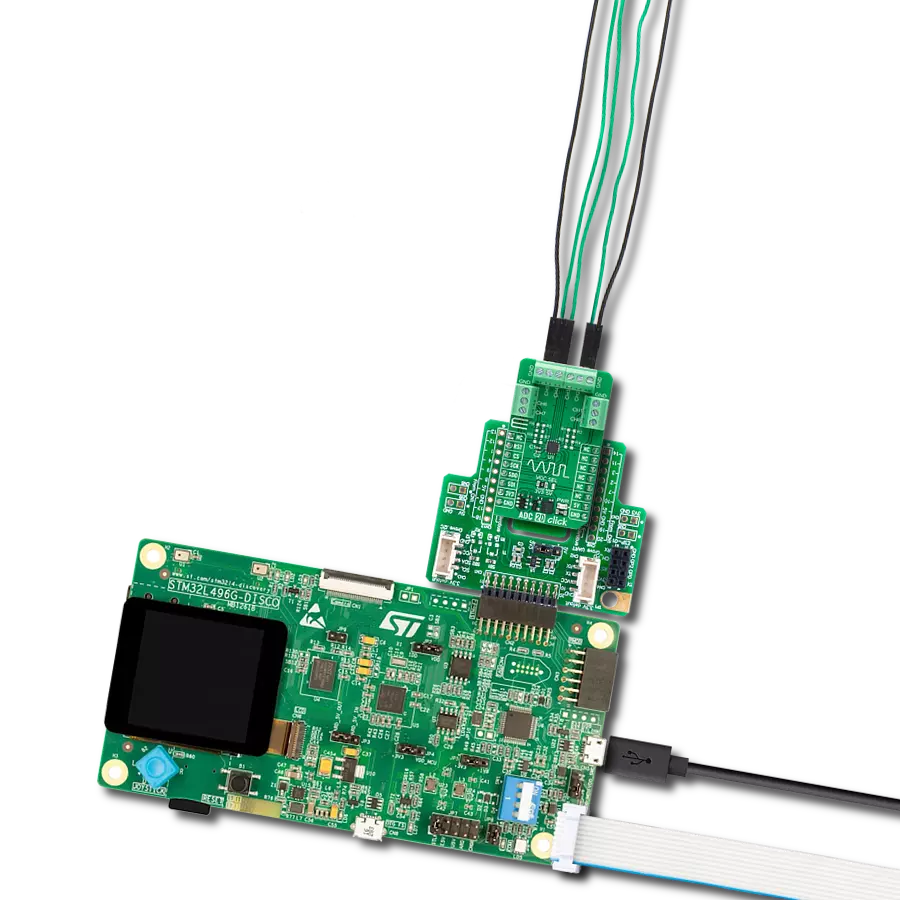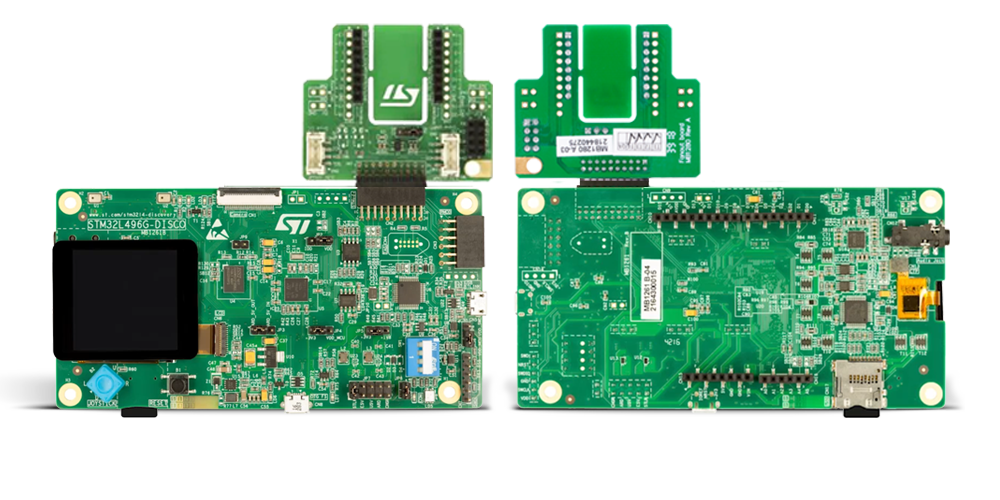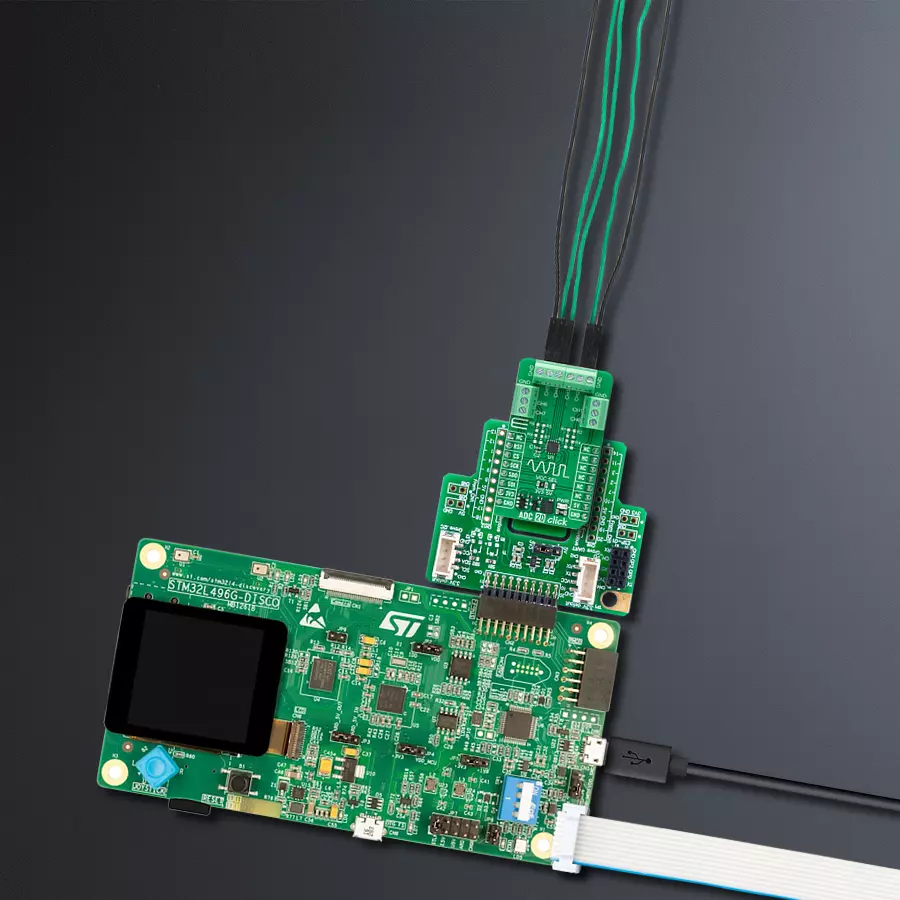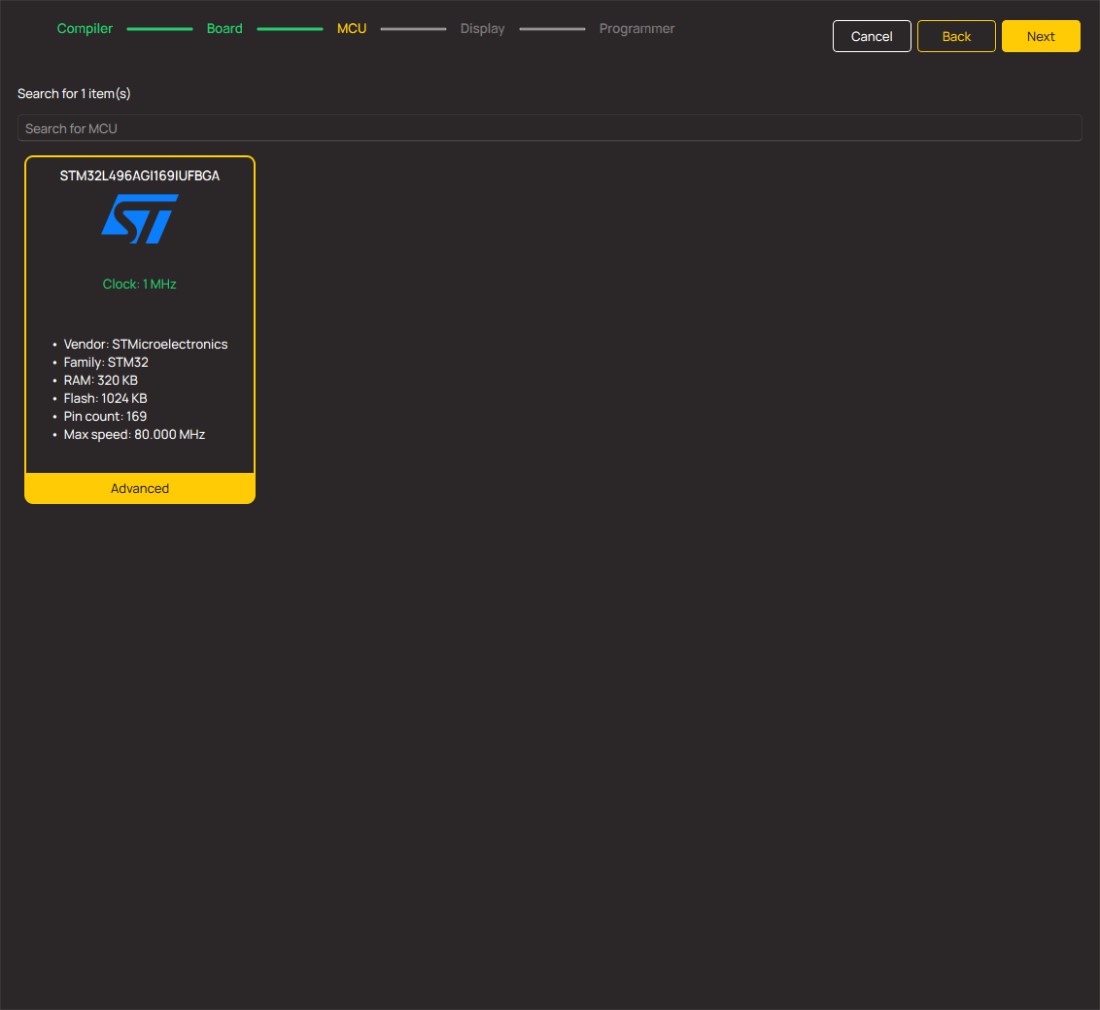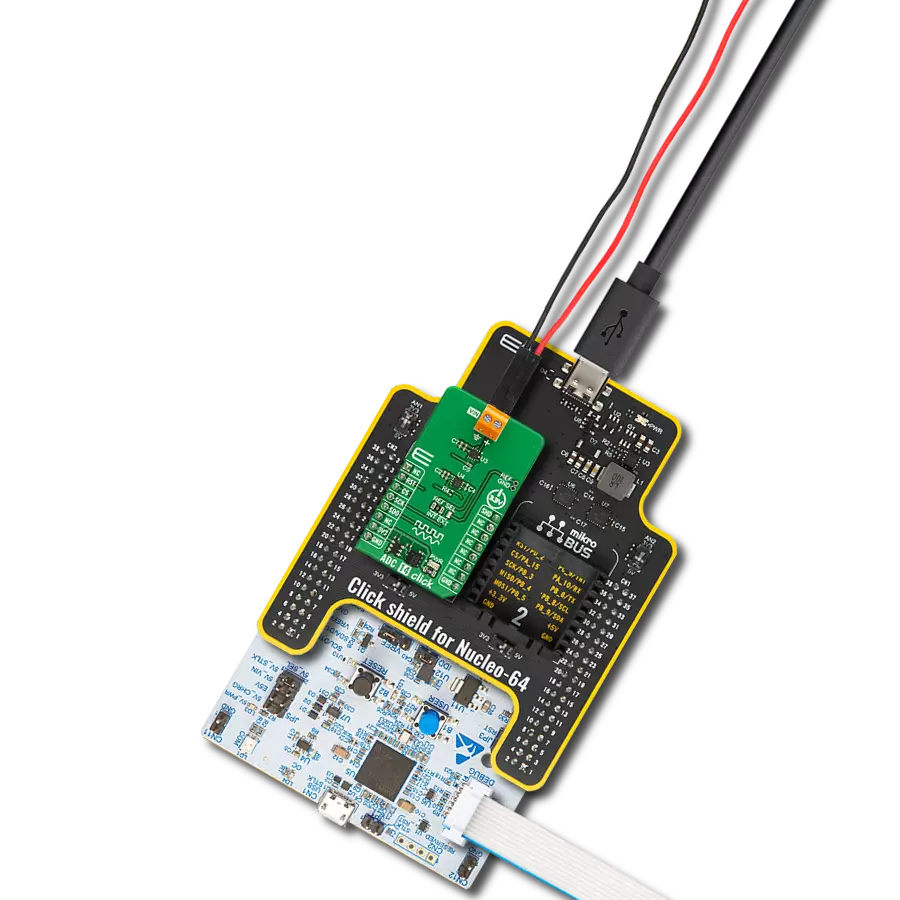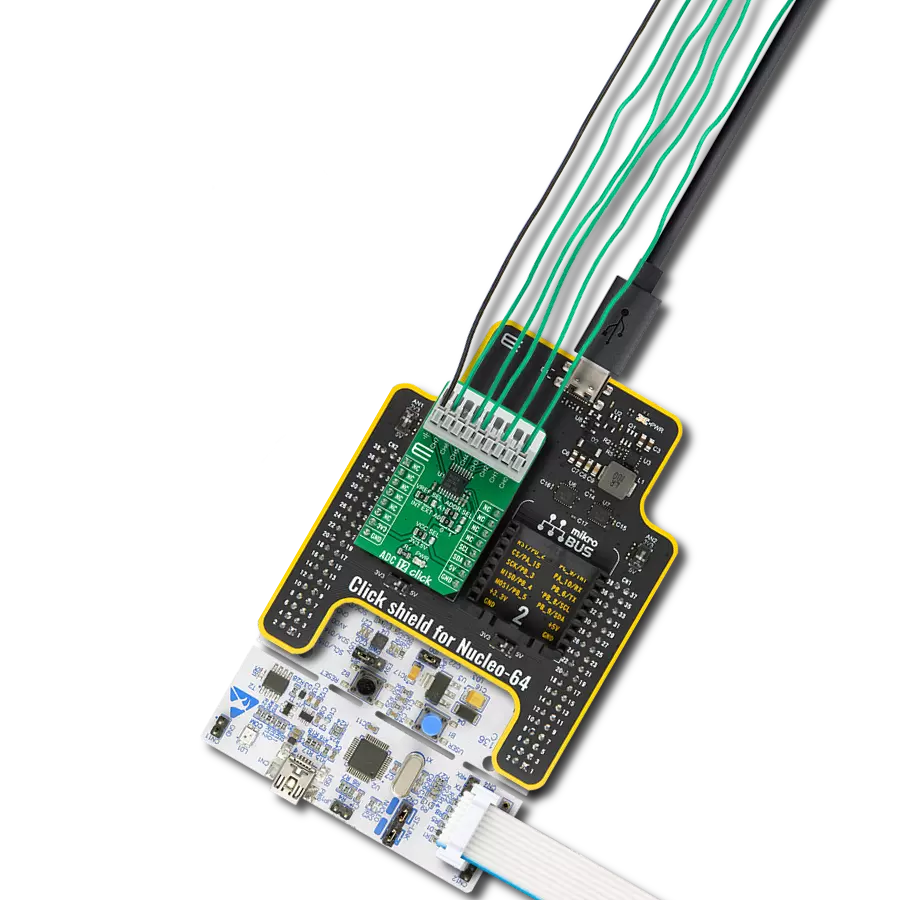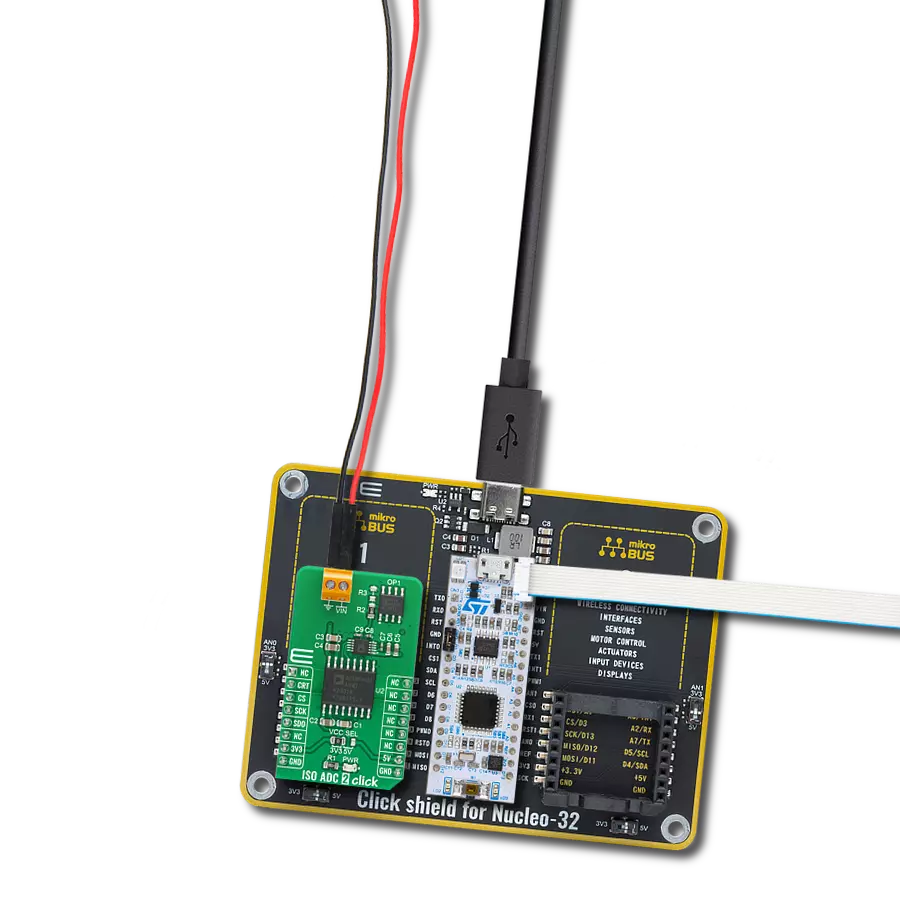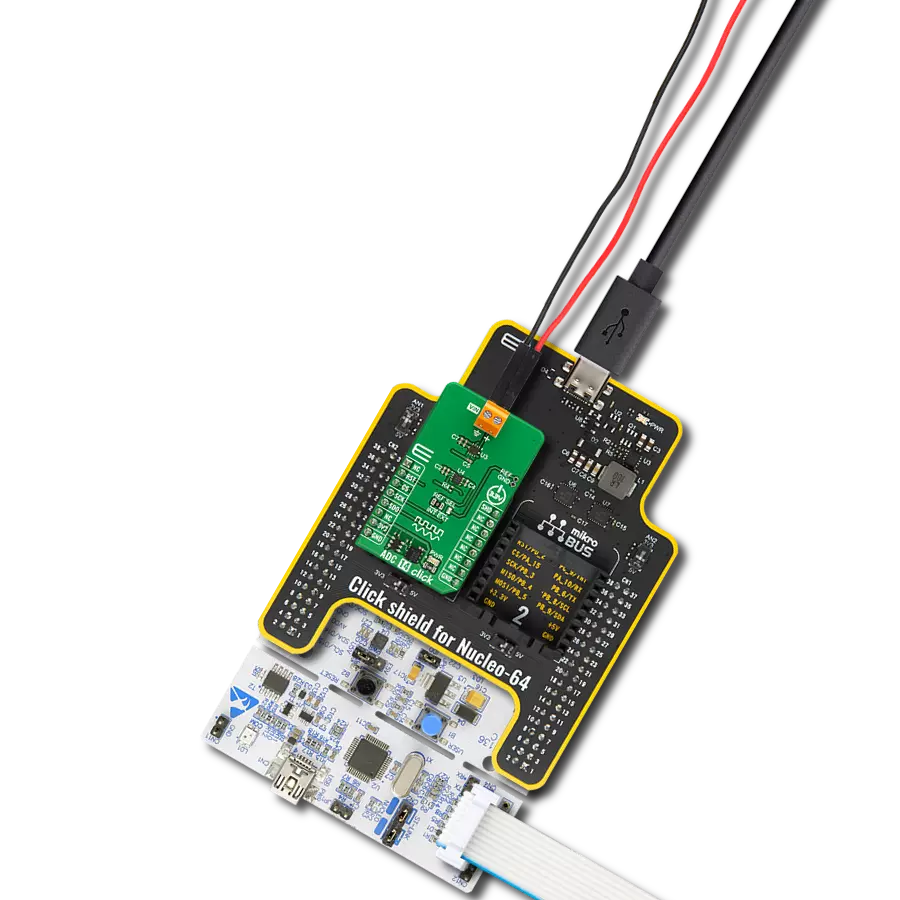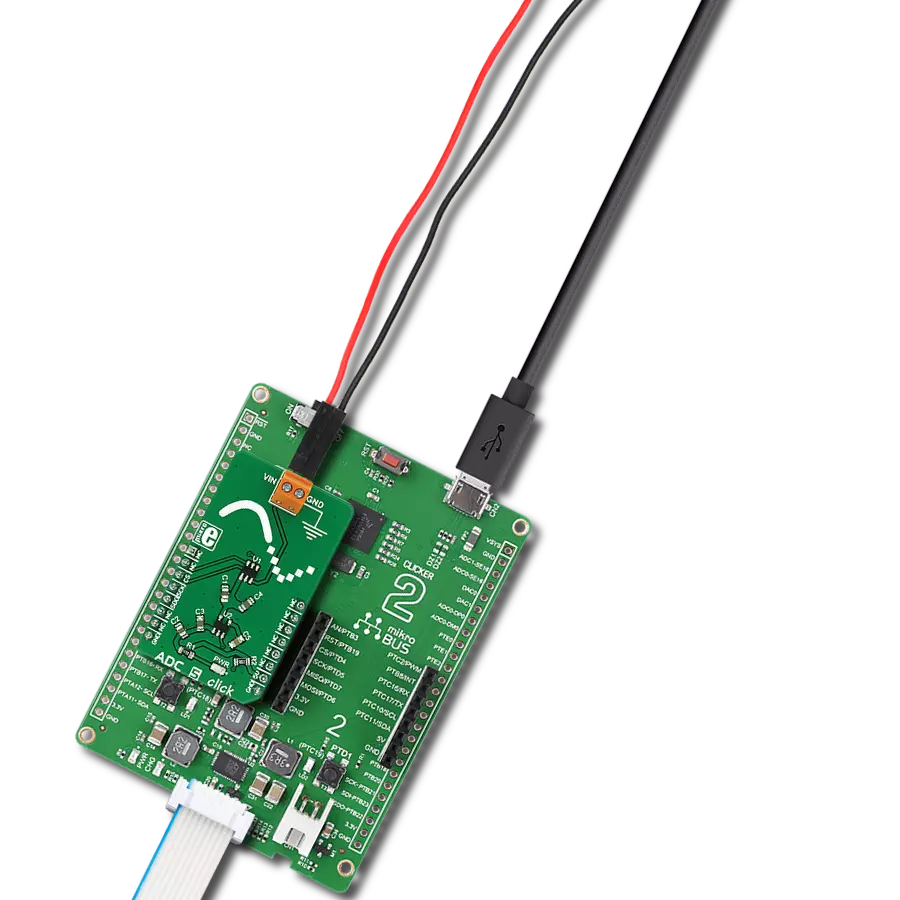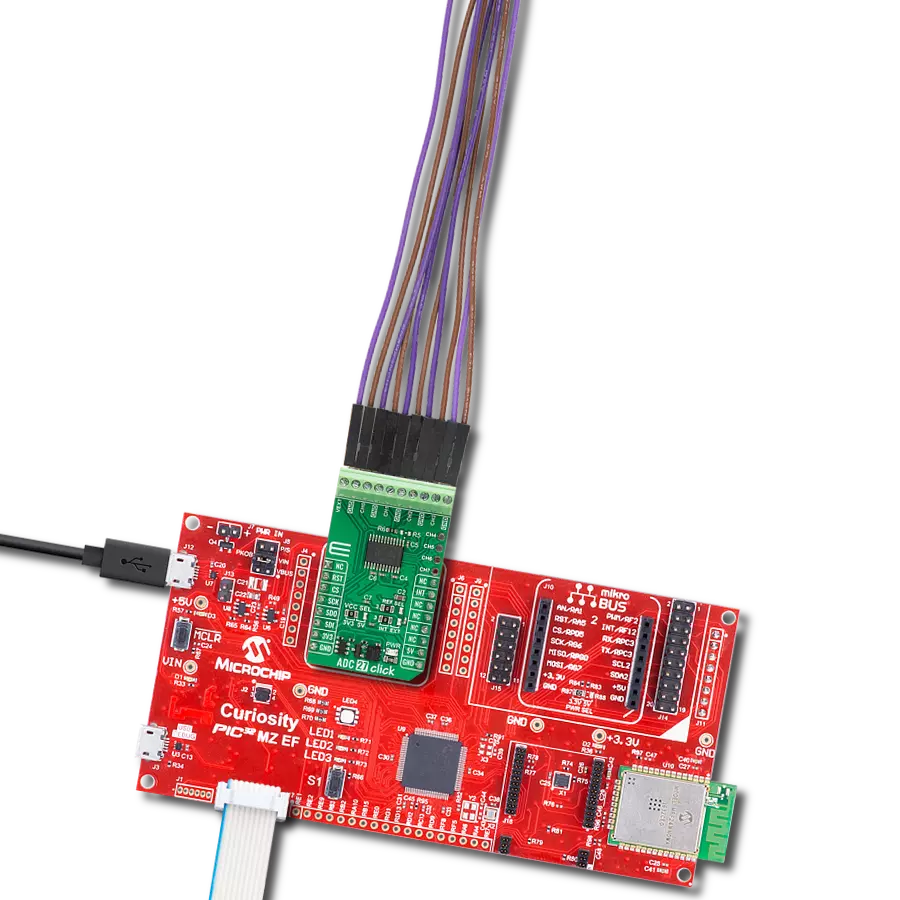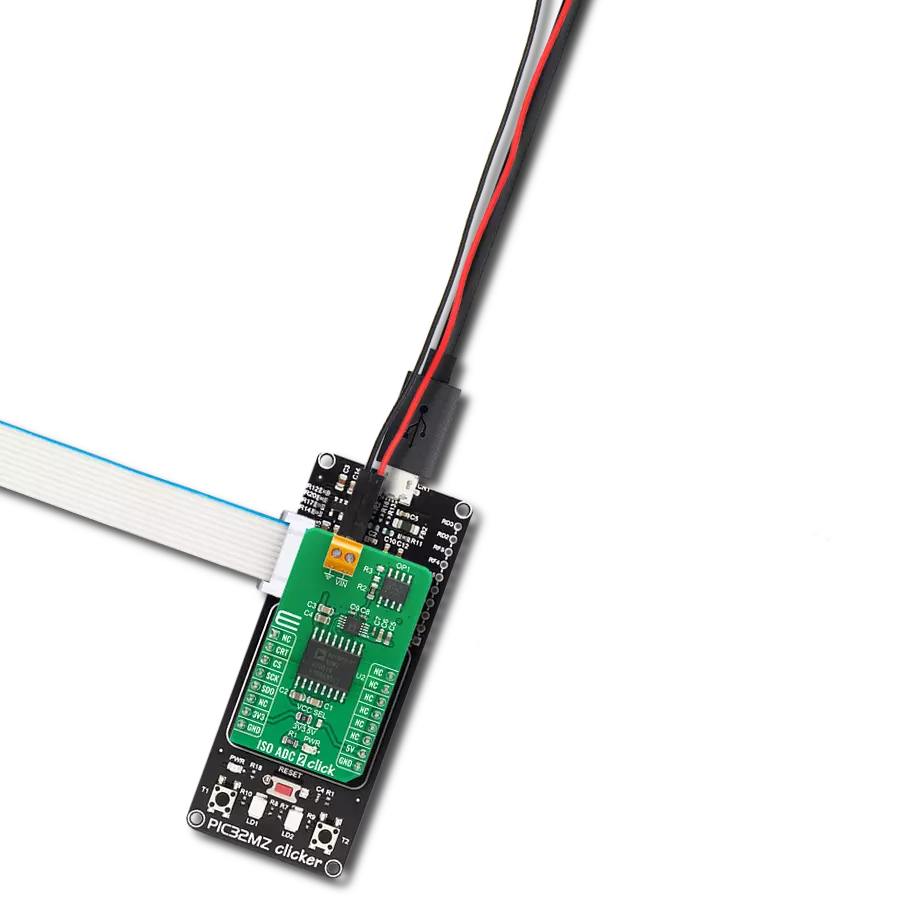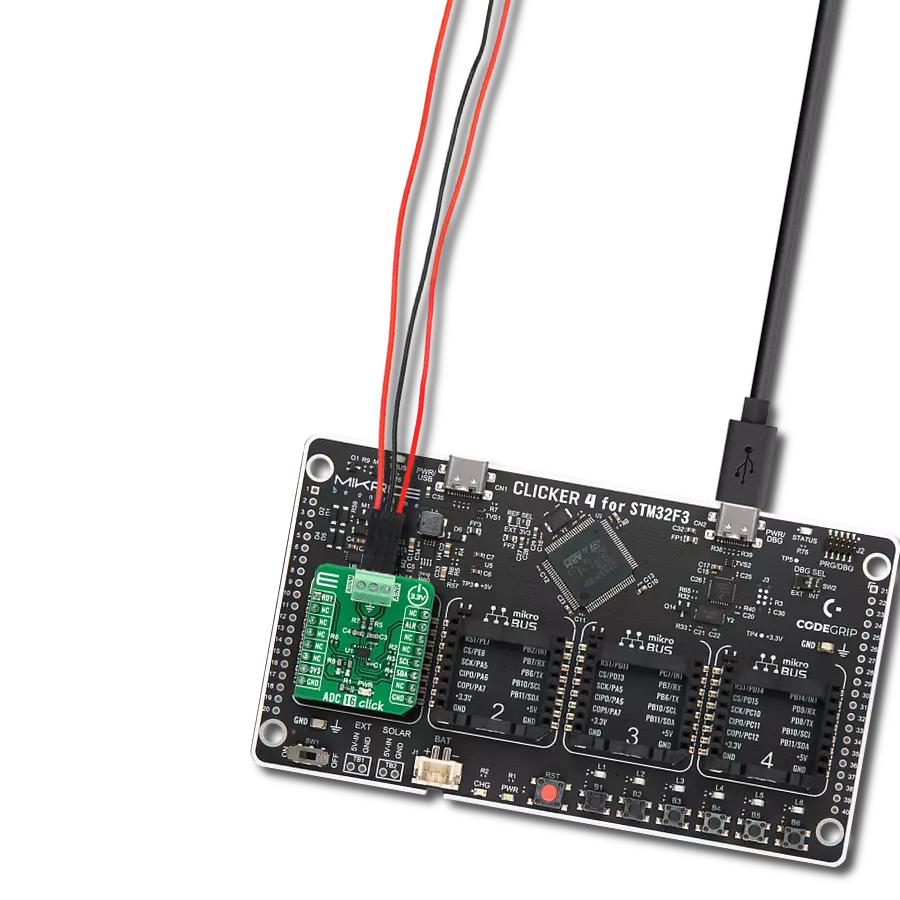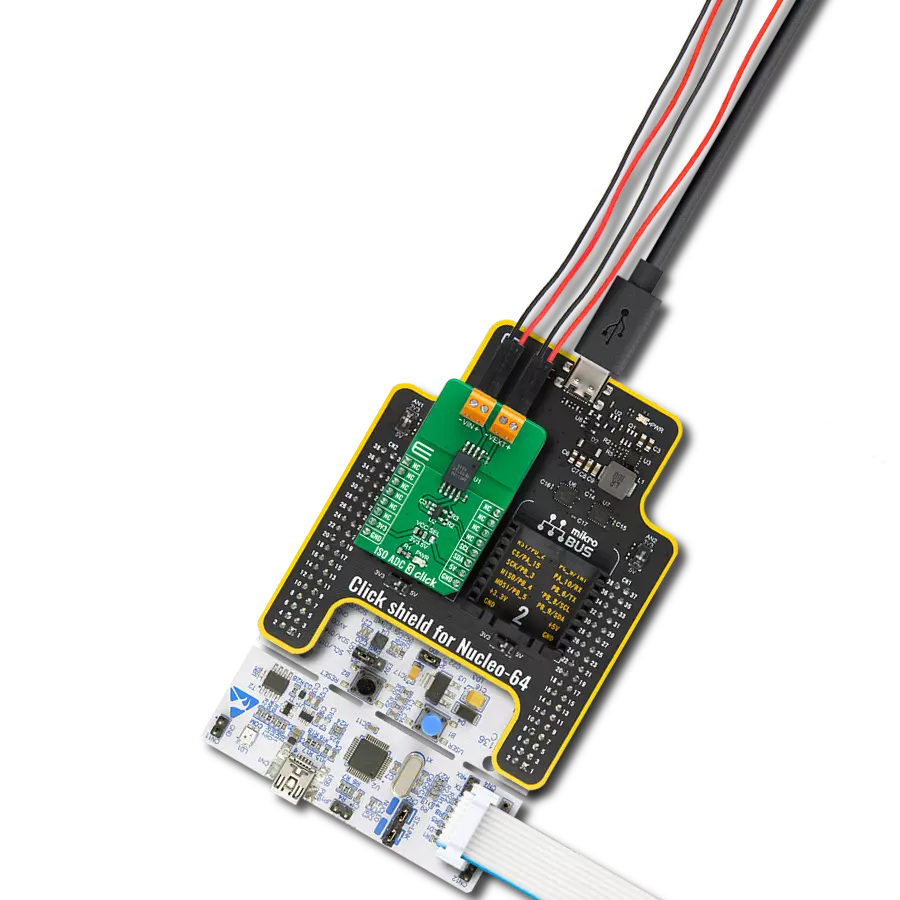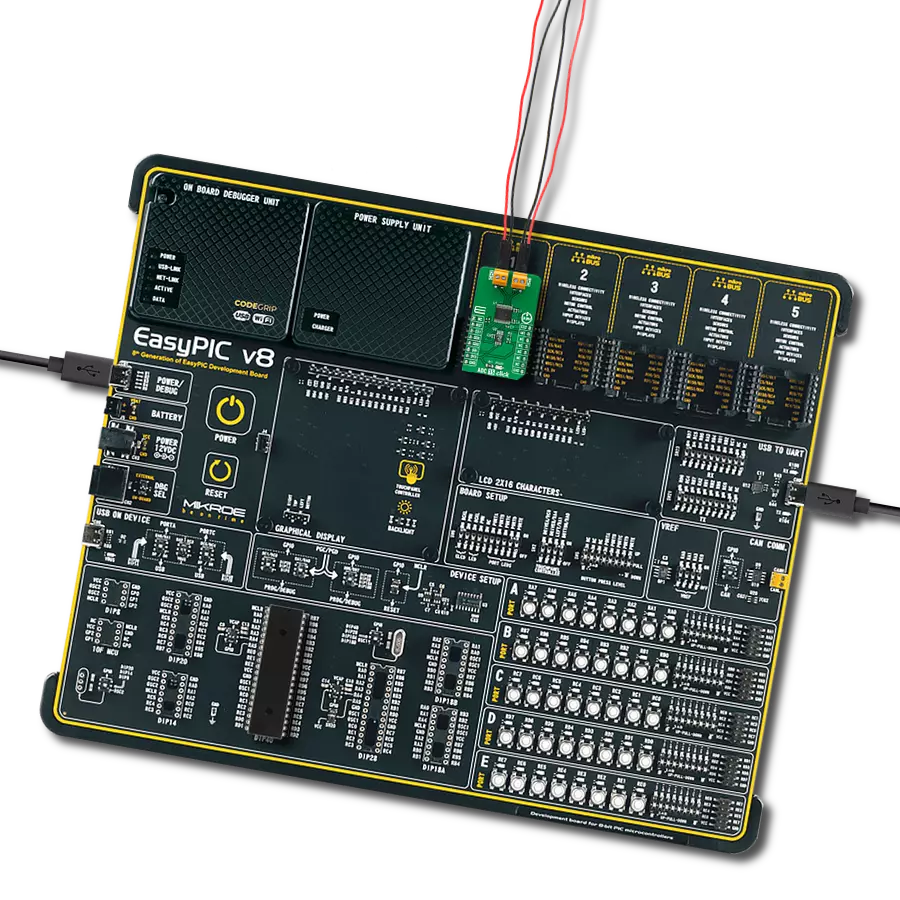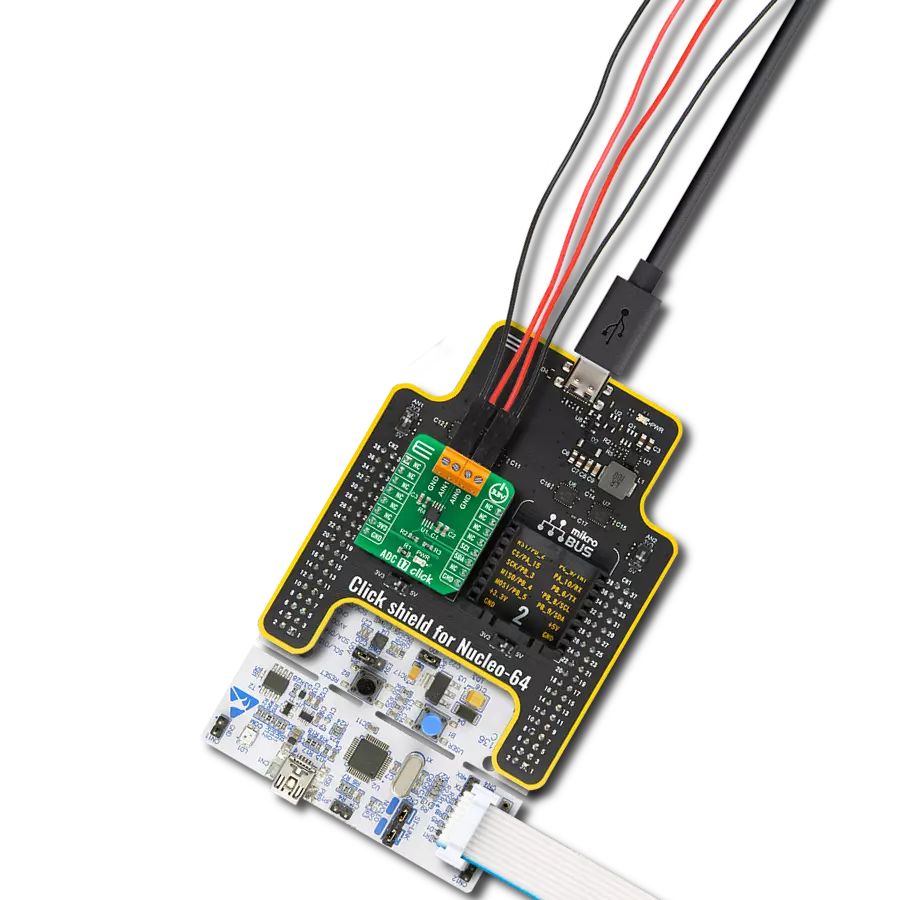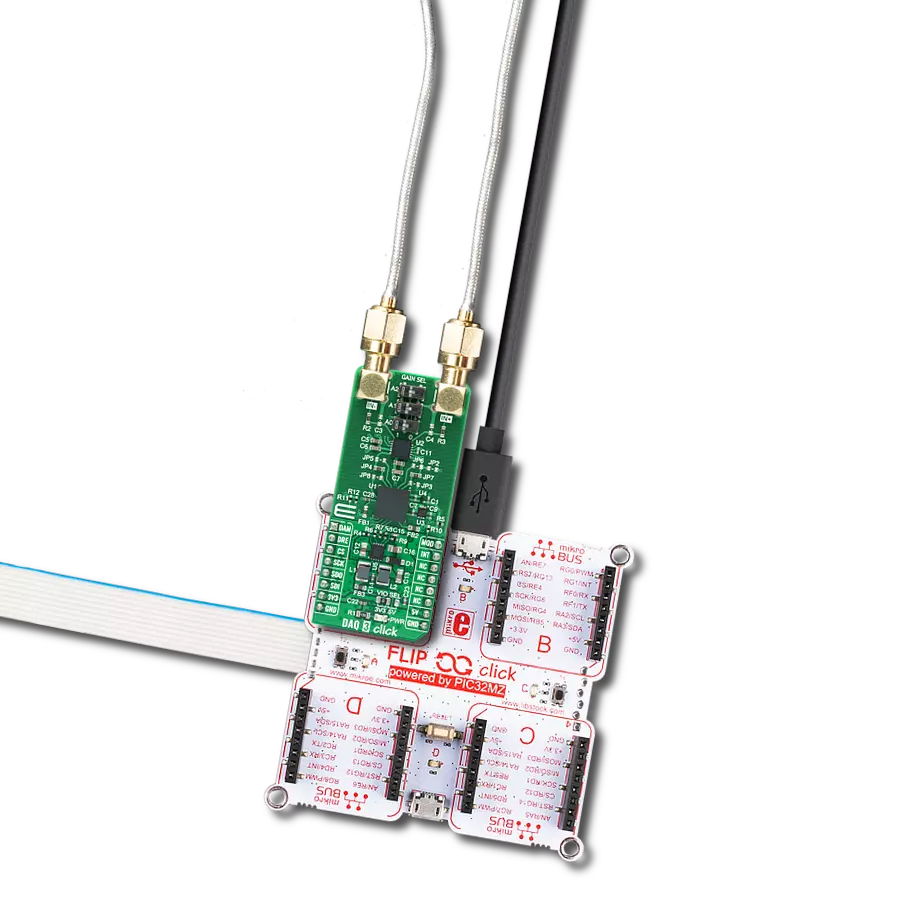Upgrade your designs with our advanced Analog-To-Digital converter and achieve precision like never before
A
A
Hardware Overview
How does it work?
ADC 20 Click is based on the TLA2518, a small, eight-channel, multiplexed, 12-bit, 1-MSPS, analog-to-digital converter (ADC) from Texas Instruments. The TLA2518 has an internal oscillator for the ADC conversion process and supports averaging multiple data samples with a single conversion start. Also, the built-in programmable averaging filters, which output a 16-bit result for enhanced resolution, help reduce noise from the analog inputs and the number of data samples required to be read by the host MCU. The analog input channel selection can be auto-sequenced to simplify the digital interface with the host MCU. This Click board™ communicates with MCU through a standard SPI interface, supporting all four SPI-compatible protocols (SPI Mode 0, 1, 2, and 3) to access
the device, and operates at clock rates up to 60MHz for all configurations and information management and acquiring conversion results. As mentioned, the TLA2518 powers up in Manual mode and can be configured into either of three operational modes by writing the configuration registers for the desired mode. The Manual mode allows the host MCU to directly select the analog input channel, while in the second, the On-the-Fly mode of operation, the analog input channel is set using the first five bits on the SDI signal without waiting for the CS rising edge. This way, the ADC samples the newly selected channel on the CS edge, and there is no latency between the channel selection and the ADC output data. In the third Auto-Sequence mode, the internal channel sequencer
switches the multiplexer to the next analog input channel after every conversion. In addition to the fact that all eight channels, also including channels on the side headers, can be used as analog input pins, this board allows for some channels, in this case, channels CH0, CH1, CH6, and CH7 of the TLA2518 to be configured as digital inputs, open-drain digital outputs, and push-pull digital outputs. This Click board™ can operate with either 3.3V or 5V logic voltage levels selected via the VCC SEL jumper. This way, both 3.3V and 5V capable MCUs can use the communication lines properly. However, the Click board™ comes equipped with a library containing easy-to-use functions and an example code that can be used, as a reference, for further development.
Features overview
Development board
The 32L496GDISCOVERY Discovery kit serves as a comprehensive demonstration and development platform for the STM32L496AG microcontroller, featuring an Arm® Cortex®-M4 core. Designed for applications that demand a balance of high performance, advanced graphics, and ultra-low power consumption, this kit enables seamless prototyping for a wide range of embedded solutions. With its innovative energy-efficient
architecture, the STM32L496AG integrates extended RAM and the Chrom-ART Accelerator, enhancing graphics performance while maintaining low power consumption. This makes the kit particularly well-suited for applications involving audio processing, graphical user interfaces, and real-time data acquisition, where energy efficiency is a key requirement. For ease of development, the board includes an onboard ST-LINK/V2-1
debugger/programmer, providing a seamless out-of-the-box experience for loading, debugging, and testing applications without requiring additional hardware. The combination of low power features, enhanced memory capabilities, and built-in debugging tools makes the 32L496GDISCOVERY kit an ideal choice for prototyping advanced embedded systems with state-of-the-art energy efficiency.
Microcontroller Overview
MCU Card / MCU
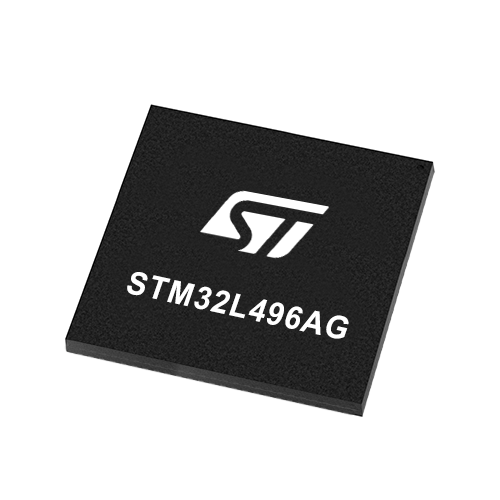
Architecture
ARM Cortex-M4
MCU Memory (KB)
1024
Silicon Vendor
STMicroelectronics
Pin count
169
RAM (Bytes)
327680
Used MCU Pins
mikroBUS™ mapper
Take a closer look
Click board™ Schematic

Step by step
Project assembly
Software Support
Library Description
This library contains API for ADC 20 Click driver.
Key functions:
adc20_read_dataThis function reads two bytes of data by using SPI serial interface.adc20_set_gpo_valueThis function sets the gpo value for the selected channels.adc20_read_gpio_valueThis function reads the gpio pins value.
Open Source
Code example
The complete application code and a ready-to-use project are available through the NECTO Studio Package Manager for direct installation in the NECTO Studio. The application code can also be found on the MIKROE GitHub account.
/*!
* @file main.c
* @brief ADC 20 Click example
*
* # Description
* This example demonstrates the use of ADC 20 Click board by displaying the state of 8 channels
* configured as analog inputs (CH2-CH5), digital inputs (CH0-CH1) and digital outputs (CH6-CH7).
*
* The demo application is composed of two sections :
*
* ## Application Init
* Initializes the driver and performs the Click default configuration.
*
* ## Application Task
* Starts the auto sequence mode, reads the 12bit ADC value from analog input channels (CH2-CH5) and
* displays the values converted to voltage on the USB UART. After that, stops auto sequence mode and
* toggles the state of digital output pins (CH6-CH7), then reads and displays the state of all GPIO pins.
*
* @author Stefan Filipovic
*
*/
#include "board.h"
#include "log.h"
#include "adc20.h"
static adc20_t adc20;
static log_t logger;
void application_init ( void )
{
log_cfg_t log_cfg; /**< Logger config object. */
adc20_cfg_t adc20_cfg; /**< Click config object. */
/**
* Logger initialization.
* Default baud rate: 115200
* Default log level: LOG_LEVEL_DEBUG
* @note If USB_UART_RX and USB_UART_TX
* are defined as HAL_PIN_NC, you will
* need to define them manually for log to work.
* See @b LOG_MAP_USB_UART macro definition for detailed explanation.
*/
LOG_MAP_USB_UART( log_cfg );
log_init( &logger, &log_cfg );
log_info( &logger, " Application Init " );
// Click initialization.
adc20_cfg_setup( &adc20_cfg );
ADC20_MAP_MIKROBUS( adc20_cfg, MIKROBUS_1 );
if ( SPI_MASTER_ERROR == adc20_init( &adc20, &adc20_cfg ) )
{
log_error( &logger, " Communication init." );
for ( ; ; );
}
if ( ADC20_ERROR == adc20_default_cfg ( &adc20 ) )
{
log_error( &logger, " Default configuration." );
for ( ; ; );
}
log_info( &logger, " Application Task " );
}
void application_task ( void )
{
adc20_start_auto_sequence ( &adc20 );
for ( uint8_t ch_id = ADC20_CHANNEL_ID_2; ch_id <= ADC20_CHANNEL_ID_5; ch_id++ )
{
uint16_t adc_data = 0;
if ( ADC20_OK == adc20_read_data ( &adc20, &adc_data ) )
{
float voltage = ( float ) ( adc_data >> ADC20_ADC_OFFSET ) / ADC20_RES_12BIT * ADC20_VREF_3V3;
log_printf ( &logger, " AIN%u: %.2f V\r\n", ( adc_data & ADC20_CHANNEL_ID_MASK ), voltage );
}
}
adc20_stop_auto_sequence ( &adc20 );
static uint8_t out_logic_state = ADC20_GPIO_VALUE_LOW;
if ( ADC20_OK == adc20_set_gpo_value ( &adc20, ( ADC20_CHANNEL_6 | ADC20_CHANNEL_7 ), out_logic_state ) )
{
uint8_t gpio_value = 0;
if ( ADC20_OK == adc20_read_gpio_value ( &adc20, &gpio_value ) )
{
log_printf ( &logger, " GPIO state: 0x%.2X\r\n", gpio_value );
}
}
out_logic_state = !out_logic_state;
log_printf ( &logger, "\r\n" );
Delay_ms ( 1000 );
}
int main ( void )
{
/* Do not remove this line or clock might not be set correctly. */
#ifdef PREINIT_SUPPORTED
preinit();
#endif
application_init( );
for ( ; ; )
{
application_task( );
}
return 0;
}
// ------------------------------------------------------------------------ END
Additional Support
Resources
Category:ADC
